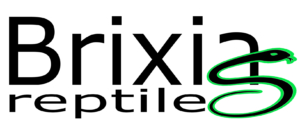Psilocybe Semilanceata: Liberty Cap Mushroom Identification and Information
The potency can drastically change from one shroom to the next, even if you picked them at the same time from the same field. In 1963, the famous chemist Albert Hofmann (the man responsible for synthesizing LSD) and mycologist Roger Heim documented the presence of Psilocybe semilanceata in Europe. The two started studying the species based on the information they found in James Sowerby’s 1803 book “Coloured Figures of English Fungi or Mushroom” (mentioned earlier). In his article, Dr. Brande noted that the likely suspect was, in fact, Psilocybe semilanceata. Further proof that the Liberty Cap was to blame for this unsuspecting family’s trip can be found in a book called “Coloured Figures of English Fungi or Mushroom” by James Sowerby (1803). Later that year, after the family reported the experience, a chemist named Augustus Everard Brande wrote about the family’s experience.
The gills start light grey/black, are mottled and have a lighter edge but become very dark purple/black as the spores are released. This common Autumn mushroom has been illegal to pick, prepare, eat or sell since 2005 as they are now considered a class A drug. Liberty Caps contain the active ingredients psilocybin and psilocin, which can cause hallucinations and in some cases, nausea or vomiting. If you’ve picked a mushroom that you believe is a Liberty Cap but are still unsure of its true identity, you can liberty caps gills take a spore print. Younger shrooms can have greyer-looking gills, and older shrooms can have gills that look almost black. Pastures grazed by livestock or horses can be fantastic areas to look at.
Despite Having No Brain This Fungus Can Recognize Shapes & Make Decisions
Like all Psilocybe shrooms the Liberty Cap contains psilocybin, as well as psilocin and baeocystin in varying quantities. Numerous studies, including one by Gartz in 1993, have quantified the percentages of psychoactive compounds found in Liberty Caps. However they can range from 0.2% to a whopping 2.37%, which is, in fact, the highest psilocybin concentration ever found in a mushroom.
The stem is very slender and can be wavy, but its fibrous nature makes it quite strong unlike that of lookalikes. Psilocybe semilanceata, commonly known as the liberty cap, is a species of fungus which produces the psychoactive compounds psilocybin, psilocin and baeocystin. It is both one of the most widely distributed psilocybin mushrooms in nature, and one of the most potent. The mushrooms have a distinctive conical to bell-shaped cap, up to 2.5 cm (1 in) in diameter, with a small nipple-like protrusion on the top. They are yellow to brown, covered with radial grooves when moist, and fade to a lighter color as they mature.
How to Grow Liberty Caps?
DoubleBlind Magazine does not encourage or condone any illegal activities, including but not limited to the use of illegal substances. We are not a substitute for medical, psychological, or psychiatric diagnosis, treatment, or advice. If you are in a crisis or if you or any other person may be in danger or experiencing a mental health emergency, immediately call 911 or your local emergency resources. If you are considering suicide, please call 988 to connect with the National Suicide Prevention Lifeline. The stems of Panaeolus species are often brittle and will snap easily when bending.
Psilocybe Semilanceata as a Hallucinogenic
The heights of these mushrooms range between 1 3/4″ and five 1/2″. In wet environments, the radial grooves corresponding to the gills underneath can be seen on the caps. The wet cap of a psilocybe semilanceata hangs down and is sticky.
- In contrast, the other risks causing ecological imbalances by taking more than necessary or damaging local habitats.
- The gill attachment to the stipe is adnexed (narrowly attached), and they are initially cream-colored before tinting purple to black as the spores mature.
- You should never eat a mushroom if you are not assured of its identity.
- This enzyme is found in all species of fungi but is not harmful to humans in small doses.
Dung roundhead (Protostropharia semiglobata)
Some looked a bit like liberty caps at first glance but didn’t stand up to closer scrutiny (more on those below). Following the gradual loss of Ukraine’s autonomy, Kyiv experienced growing Russification in the 19th century, by means of Russian migration, administrative actions, and social modernization. The little psychedelic mushrooms spring up in pastures, fields and parks all over the country. You may need to search several locations until you find one that is overflowing with liberty caps.

Lascia un Commento
Vuoi partecipare alla discussione?Sentitevi liberi di contribuire!